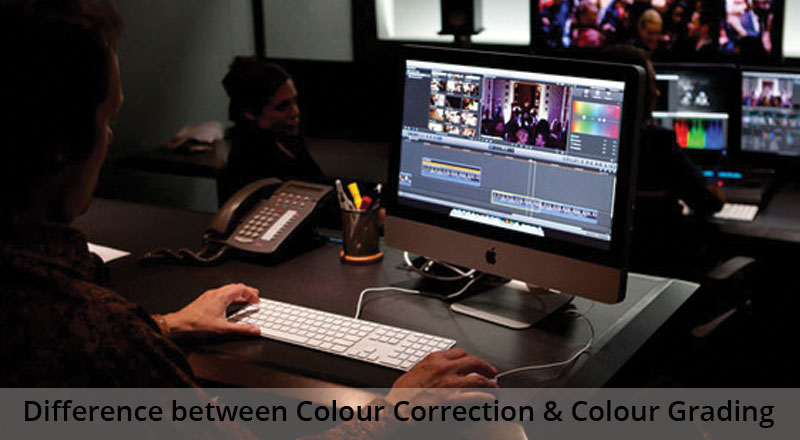Difference between Colour Correction & Colour Grading
- May 26, 2017
- Posted by:
- Category: Post-Production

Way back, in the analog days, we used colour timing, a time consuming photo-chemical process that could only be done in a laboratory. Today, we do it at the touch of a mouse and can change the colour profiles of footages in Colour Correction Studio. Previously, the terms colour correction and colour grading were used in place of one another, interchangeably, but they are not the same. Colour correction and colour grading are quite similar in the process of operation, but they differ in where and how they are used.
We cannot place any less importance on colour as we can to the story, both being fundamental in the process of delivering a production. While the story keeps the audience rooted to their seats, the colour on screen can be used for a variety of purposes like expressing emotions, describing objects or to evoke a response. Let us take a look at what colour correction and colour grading are, and where they differ.
Colour correction:
This process is where each and every individual clip of a video footage is altered to match the temperature of the colour to multiple shots in order to bring in a standard appearance. Basically it is making your whites whiter and the blacks’ blacker, and the other colours nice and steady. Here the objective is to ensure that the footage visible to the human eye is standardised, and nothing seems out of place visually.
Primary and secondary colour correction:
primary correction is performed across the whole image, using the RGB, gamma (mid tones), highlights (white), and shadows (black) controls. Normally, by altering the intensity of a single colour, the whole image is altered.
Secondary colour correction is based on the concept of chroma keying; here only the saturation, hue and luminance of the cyans, magentas, yellows, and RGB’s are altered. All other colours ae only affected minimally.
Masks/mattes:
Besides the above two methods, there are mattes and masks which are geometric shapes and can be used to isolate the colour adjustments to any specific area of the desired image.
Colour grading:
It is the process of fine tuning the colour correction process, and makes it more pleasing to the eye. All the videos that you see use additive colour systems, and the primary colours being Red, Blue and Green, all other colours being a mix of varying proportions of these three colours. Normally, colour grading is done by changing the range of the thresholds as well as the tolerances within these channels of Red, Blue and Green.
Nowadays with a plethora of accomplished visual artists at the disposal of a movie production house, colour correction and colour grading are carried out effortlessly with the help of high end rendering computers. There are innumerable numbers of software available for video editing, and all of these involve colour correction and colour grading. One tends to get carried over with all the controls at his/her disposal while working on an image, however the overall theme and desired effect should always be kept in mind o that the best results are achieved.
